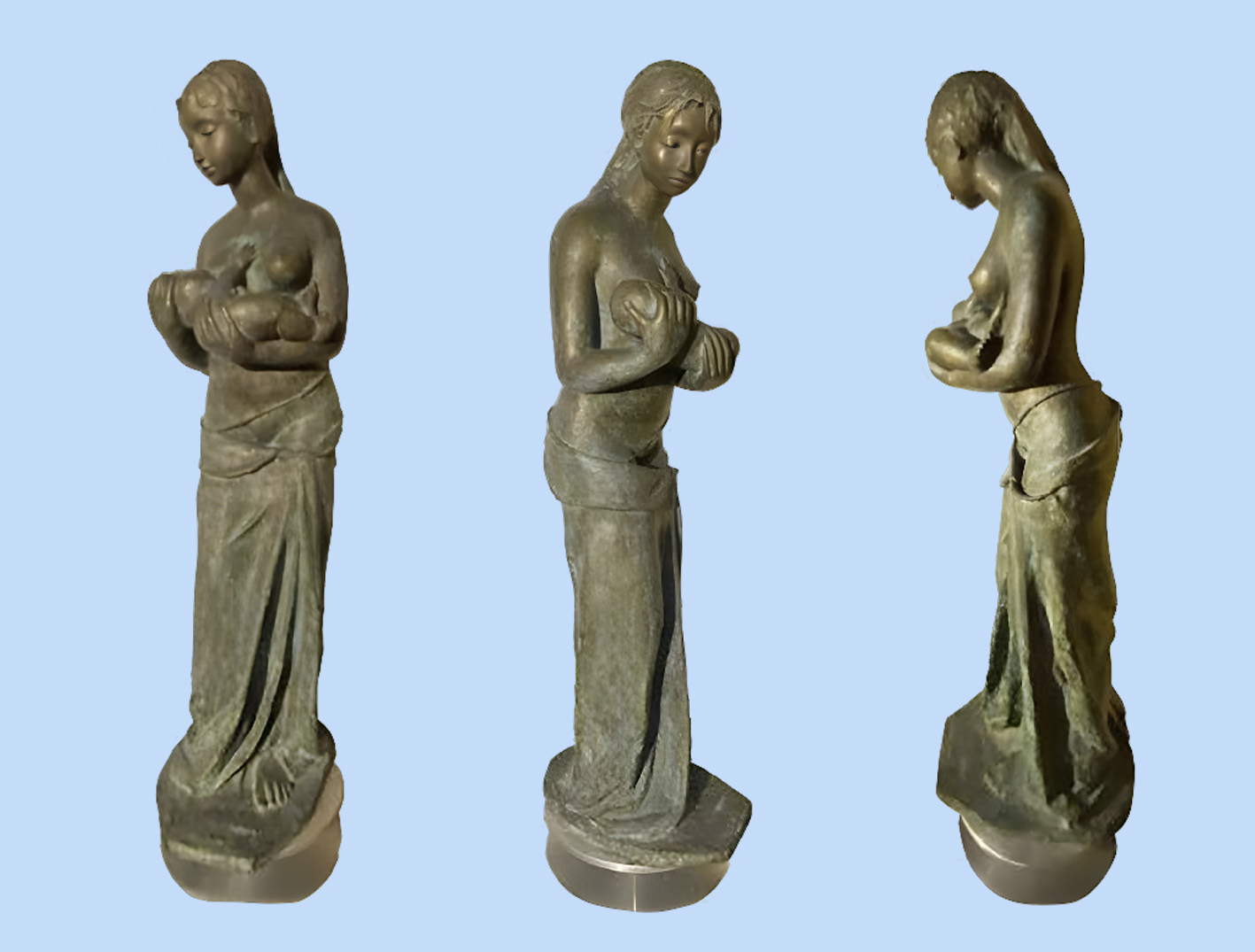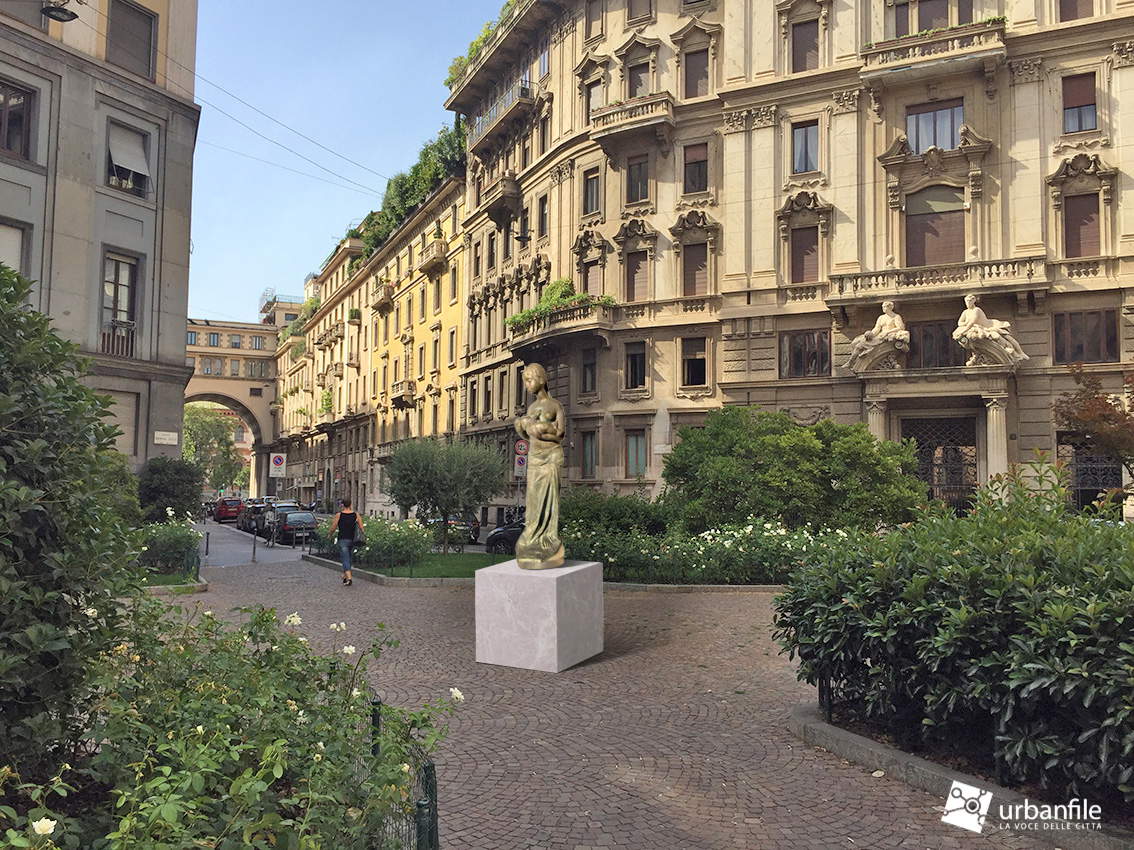In some ways, what is happening around the sculpture of motherhood donated by Vera Omodeo’s heirs to the City of Milan is reminiscent of a recent episode that occurred in Carrara, just before the Christmas holidays. A former professor of the Carrara Academy of Fine Arts had made a gift to the municipality of one of his works, a bulky and questionable “Venus” in bardiglio marble, placed by the administration, more than swiftly, in one of the nerve centers of the historic center, in front of the Cybo-Malaspina Palace, the current seat of the Academy, with a decision-making flair that even led to the resignation of the then chairman of the city council’s culture committee. In that case, the donation had been judged favorably (although the favorable opinion was learned of a few days later, and moreover from a communiqué from the councillor for culture) by a commission for the evaluation of works of art in public space, without, however, the opinion of that commission being published or at least adequately articulated, as should always happen in such cases. The problem, in essence, is identical: in Carrara, the commission in charge gave a positive opinion as superficially as the commission in Milan gave a negative one. This, at least, from what has transpired from the respective buildings, since it does not appear that the respective reports have been circulated.
It is, in short, a pure question of method. It is known that the arrival of donations from artists, or artists’ heirs, to municipal administrations is a fairly frequent occurrence: the point is that not everything that arrives is provided with the minimum requirements to be exhibited in a more or less important public space. Works of poor quality, works of little significance, works that are ill-suited to urban contexts. A commission dedicated to the evaluation of artworks in public space should express itself exclusively on the quality of the works and its relation to the places that should host them. It is difficult to imagine that it could evaluate a work on the basis of the values it represents, and possibly discard it if it finds that those values are not “universally shared” (it would then be curious to know since when motherhood stopped being a condition and became a value). As Repubblica reported, the commission rejected the placement of Vera Omodeo’s work From Mother’s Milk We Come because “the sculpture represents values that are certainly respectable but not universally shared by all, such as to discourage its inclusion in public space.” And in the case, without going so far as to think that it would be necessary to clean up all the monuments installed on Italian public land, since it is difficult to imagine monuments capable of conveying values that would put everyone in agreement, one need only think of a work like Maurizio Cattelan’s L.O.V.E. to find a recent monument whose installation, in front of Palazzo Mezzanotte in Piazza Affari, was certainly not a “universally shared” operation. Yet in that case, and rightly so, the City Council determined that the work, initially installed for a temporary exhibition, should remain permanently.



In other words, a technical committee should not produce a political opinion: it should produce an exquisitely technical opinion. Any other kind of assessment, which then ends up providing obvious pretexts for instrumentalization (as demonstrated by the debate that the affair has raised, and in the context of which everything but the quality of the sculpture has been discussed), should be outside the commission’s competence. One can imagine, therefore, an opinion evaluating the work itself, its place in relation to the art of the period and in relation to the artists of reference for Vera Omodeo, its formal qualities, its positioning within the artist’s career, whether it could hold up to accommodation in the urban context that would have welcomed it, and so on. Vera Omodeo was a student of Francesco Messina, and her sculpture, a work from the 1980s, slavishly follows, and without particular originality, the master’s lesson. The nude is also a typical element of Francesco Messina’s poetics, and the exploration of femininity is a recurring theme in his art. Omodeo’s work does not deviate from the master’s research, and in particular from his production of the last two decades of his activity. It is a sculpture, at least in the case of this motherhood, that approaches Francesco Messina in a conventional way, lightly and with some uncertainty (in proportions, drapery, definition of certain elements, starting with the fingers of the hands). It is, in essence, the work of a pupil of Francesco Messina.
Now, considering that a monument of these proportions (we are talking about a rather slender statue, roughly six feet tall) and that it fits into the tradition of Novecento classicism to which Messina looked would not go to alter, or worse disfigure, the context of Piazza Duse, that is, the place designed to welcome it, a quiet and collected square, a square that dates back to the 1930s (the sculpture can be be said to be the daughter, or perhaps granddaughter, of that historical era), and thus would not detract from the completeness of the urban context (the Urbanfile website has produced an interesting montage showing what the square would look like if Omodeo’s motherhood were installed there), the only question that makes sense to ask is whether or not this work has the quality to become a monument. And if one believes that the work does not have this quality, that it is not up to the standard of the square that is to receive it, rather than suggesting its installation at private or religious contexts on the basis of connotations that the work moreover does not seem to have (as the heirs explained, it is linked, if anything, to the biographical story of the artist, who was able to overcome an illness that could have prevented him from having children), it would certainly be more useful and more appropriate to point out that the reasons for the denial have exclusively to do with the work itself.
Then there is one last issue: as anticipated, it is not yet possible to read the commission’s report, so we are all talking about the affair on the basis of a few quotation marks entrusted to the first newspapers that have relaunched the news. Well, through the Courier , Mayor Sala has let it be known that the dossier will be reviewed. Whatever the opinion of the new pool of experts who will have to evaluate the Omodeo statue, it would be convenient for the eventual technical report to be published. As a matter of clarity and transparency. And because then at least we would have some more elements to discuss.
Warning: the translation into English of the original Italian article was created using automatic tools. We undertake to review all articles, but we do not guarantee the total absence of inaccuracies in the translation due to the program. You can find the original by clicking on the ITA button. If you find any mistake,please contact us.